Mazda was one of the many car companies that paid Dr Felix Wankel and the NSU car company to buy a license to produce the rotary engine. And while many other licensees (including Citroen and GM…and eventually NSU itself) struggled to make the rotary a viable engine for a production car, Mazda saw it as the key to a glorious future, and is the only car company to remain loyal to the design after so many decades. Mazda was so bullish about the prospects of the rotary that it once said that “the rotary engine is a young 24 year old man with great promise, whereas the piston engine is an old man”.
History would later prove the folly of those words as keeping the rotary viable was a burden that nearly bankrupted Mazda itself.
But in the 1960s, confidence was in no short supply at Mazda Japan and so when the Cosmo 110S rotary-engined sports was released in 1967, the company wasted no time and pressed it into racing in Europe. So keen were Mazda to prove that its rotary engine could be reliable, that the event chosen was a 1968 endurance race at the legendary Nurburgring circuit, and an 84 hour marathon, no less. In the 1960s, European racing was where it was at, and so this was an event with a profile at the highest level. Mazda was not kidding around.
Mazda entered two cars, and right up to the 81st hour, they had been as high as fourth and fifth. But just three hours before the checkered flag, one of the cars suffered axle failure and had to be retired. The other, however, soldiered on to finish fourth, a highly credible result given that it was the Cosmo’s first racing outing, and especially given the totally unproven engine technology.
However, the Cosmo was really a high priced niche vehicle, and so it was no surprise that after only one race, Mazda abandoned the Cosmo as a racing platform and shifted its attention to the Familia Rotary Coupe:
Based on the mass market Familia sedan, the Coupe was small and, at 800kg, very light. Power was not prodigious, the dimunitive 10A only squeezing out 100hp. Magazine reports from the era suggest that the suspension design is a little primitive and so the handling is a little wayward, but the Familia Coupe (or R100 as it was sold in Western markets) had a great power to weight ratio and so was well known for good straight line performance in its day.
Whereas the Nurburgring Cosmos were quite close to stock and only lightly modified, the racing Familias were a lot more developed. Where the stock Coupe developed 100hp, the racing versions knocked on the door of 200hp, revving to a monumental 9000rpm.
The key to this stratospheric power increase was a technique called peripheral porting. There is really no true equivalent in piston engine terms, and it’s something that motorsport authorities would struggle to control for the next four decades around the world. Put simply, the modification of a rotary engine’s ports is actually quite similar in principle to smoothing and enlarging a piston engine’s cylinder head ports, increasing the camshaft and valve size.
However, it is simply not possible for a piston engine to double its engine output due to cylinder head and camshaft modifications alone, whereas a 100% power gain from peripheral porting is perfectly possible, due to the far greater volumetric efficiency of the rotary engine.
So racing authorities for the next 40 years would struggle to level the playing field for piston and rotary engine racers.
On the one hand, allow rotary engines to port their housings, and piston engine teams would complain that it’s an unfair advantage. On the other hand, ban porting and rotary teams would be up in arms about how piston teams are allowed to do similar (conceptual) mods to their cam timing and cylinder head.
To be honest, the motorsport playing field has rarely been level between the two types of engines, and over the years, rotary teams in various racing classes have had periods of feast and periods of famine, when the rules have either worked in favour of the rotary or not. For decades, this has applied equally, from weekend club racers to the high budget Mazda factory team at Le Mans.
But in 1969, the motorsport organisations didn’t really understand the rotary and so for the period right up until the early 70s, Mazda had largely a free rein when it came to interpreting the rulebook……so when Mazda headed back to Europe, their little Familia Coupes had a full 200hp.
Again, Mazda chose an endurance race as their debut, the 24hrs of Spa-Francorchamps. Other notable cars in the field included BMW with their 2800CS coupe, Porsche 911 and the Alfa GTa. But in terms of engine output, it is highly likely that the little Mazdas would have been more than a match for a 2.2L 911, especially in a straight line. Mazda however ran into engine problems and finished fifth and sixth, with Porsche 911s in the top 4 places.
After Spa, the Familias stayed in Europe, taking part in occasional touring car races, but Mazda returned with a vengeance to the Spa 24hr race in 1970 with no less than a team of four cars. The Familias immediately ran strongly, and Mazda must have been extremely proud, when at the 12hr mark, the Familia of Takechi and Katayama (who would later go on to great fame in Japan in touring car racing in the 70s) was in the lead, with 2 other Familias in 3rd and 4th. The leading Familia of Katayama would still be in contention for outright victory right up until the 18th hour.
Sadly it wasn’t going to be a fairytale for Mazda, and one by one, the high strung Familias struck engine troubles and retired. One lone Familia clung on to finish 5th.
Just the same, it was a stunning debut for Mazda and the rotary engine on the world stage, but the time of the crude little Familia was over. Mazda would return to Japan, where the racetracks were already dominated by a certain car called….the GT-R. And Mazda knew that the little Familia would not be enough for that battle.
Until next time, here’s what a historic racing Familia looks like in action:


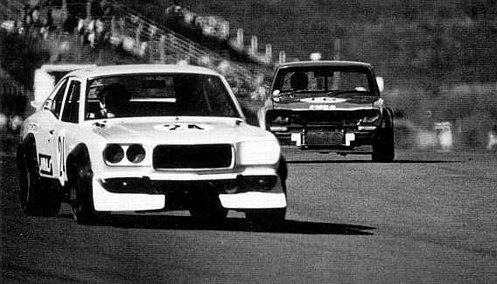

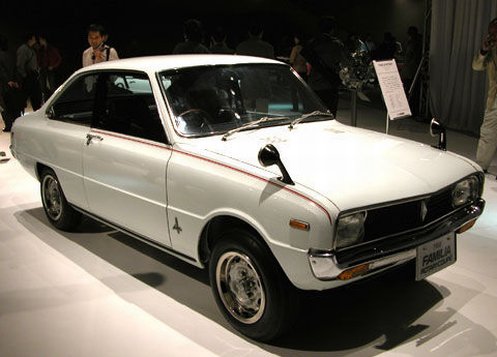


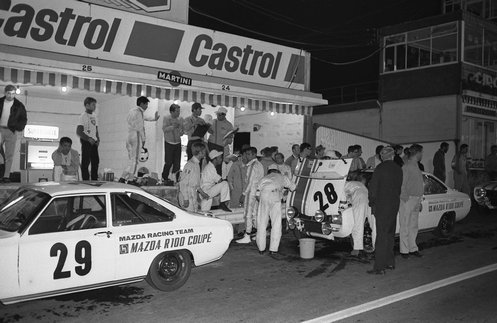
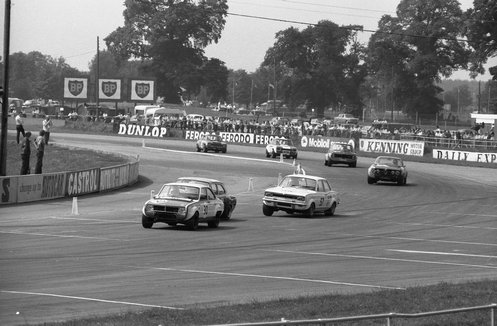

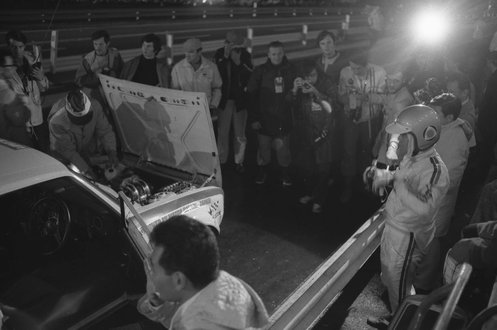




Great work Kev! The combination of great photos and writing really helped to send me back there. Felt great!